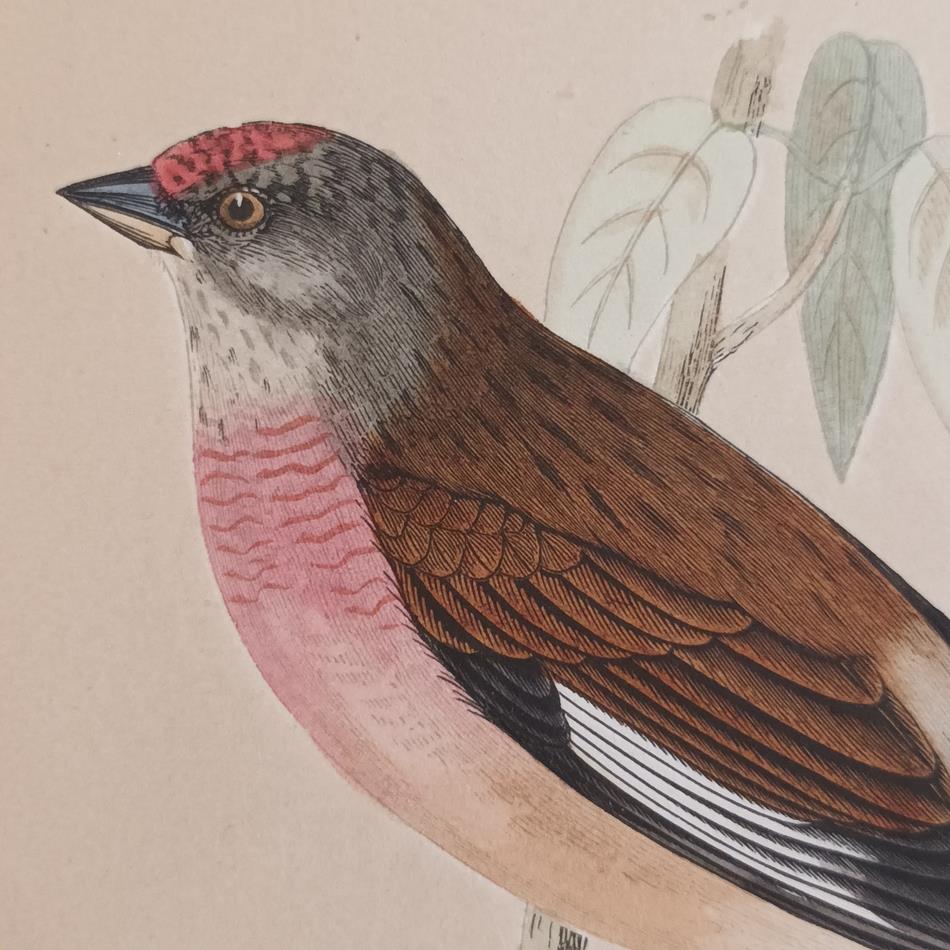Tigers Decorative
A Set Of 19th Century Framed Bird Prints
A Set Of 19th Century Framed Bird Prints
Regular price
£0.00 GBP
Regular price
Sale price
£0.00 GBP
Unit price
per
Tax included.
Couldn't load pickup availability
A set of four 19th Century oval framed bird prints by Rev F.O Morris, B.A member of The Ashmolean Society, circa 1852. These are presented in our handmade copies of an original Regency frame. These frames are made in our workshop, using the traditional methods of wood, plaster, gesso, bole and gilding with 23 carat gold leaf. The frames have a delicate pale coral coloured wash between the nulling and outer mould and the glass has a verre eglomise boarder. They are subtly aged and finished with a period or hand cast brass picture ring for hanging.
Chaffinch, Redpole, Linnet, Mountain Finch
Height: 30 cm | Width: 25 cm | Depth: 3.5 cm
SOLD
Benjamin Fawcett (1808 - 1893) was an English nineteenth century woodblock colour printer. In about 1845 he formed a close working association with Francis Orpen Morris. This relationship would last nearly 50 years and have a profound effect on British ornithology. Morris wrote the text for books which were financed and printed by Fawcett, and were engraved by Alexander Francis Lydon (1836–1917), who had started his career as Fawcett's apprentice.
At first wood-engraving illustrations were coloured by hand, but later a system of colouring from multiple wood blocks was used. Hand-coloured wood engraving started with an accurate painting of the subject. This picture was then carved on a wooden block, standing proud in order to pick up the ink. The block was then placed in a printing press to give a black-and-white print, which was then hand-coloured. The wooden print blocks were carved with great attention detail. Pear and boxwood were sufficiently hard and fine-grained, making them durable and capable of showing fine detail.
Fellow engraver W. D. Ridley wrote: "Benjamin Fawcett was undoubtedly a born genius in the best sense of the word; for in a remote country town in the early days of railway facilities, when it must have been difficult to buy high-grade colour inks, he brushed all difficulties aside, purchased his own boxwood shipped direct from Turkey, matured it, sawed it in slices, surfaced it accurately, drew the whole of his work, Morris's British Birds, upon these blocks himself, and with the aid of his clever wife, actually produced the first edition so far as the blocks were concerned, "If there was a secret which produced the fine results it would have been - Benjamin Fawcett engraving every one of the three hundred and sixty plates for this work on wood with his own hand, making the inks himself from the costliest powders and the most expensive varnishes procurable and each specimen plate for the colourers painted by his wife.
This, I believe, is an achievement without parallel in book production.







































